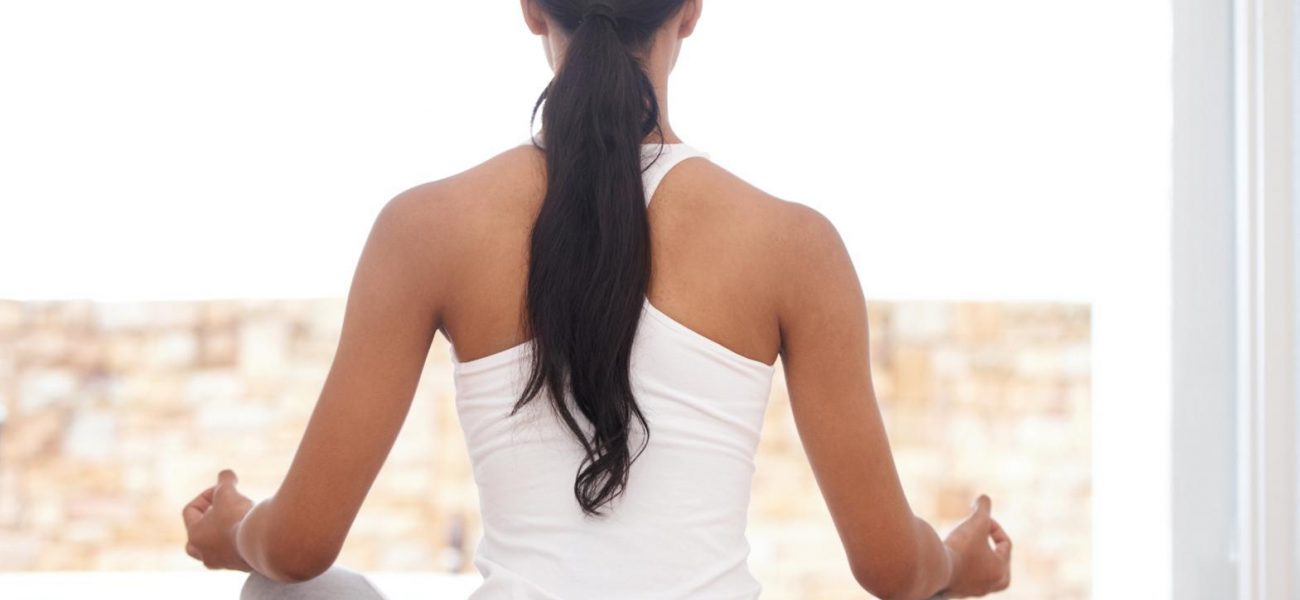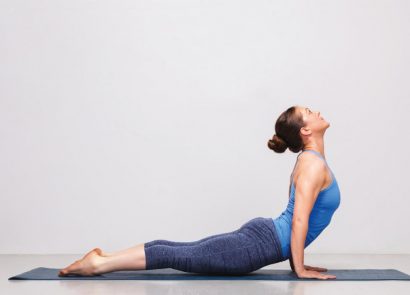Despite what it may seem, meditation isn’t just about sitting on the floor and closing your eyes, attempting to clear all thoughts from your mind but failing miserably. When done correctly, this practice has many benefits, from lowering stress and lengthening your attention span to improving your sleep and decreasing your blood pressure – and some studies suggest that it could even reduce age-related memory loss. Intrigued? Read on to find our easy tips for beginners to show you that anyone can meditate, even if they’re short on time. Prepare to say ‘om’!
What is meditation?
“Meditation is an approach to training your mind to focus and redirect your thoughts, but there are many techniques depending on your goal,” says
Dominica Roszko, health and wellbeing expert and founder of vegerasta.com. “Concentration meditation, for instance, involves focusing on a point like following the breath, repeating a single word or mantra or staring at a candle flame. It’s very challenging for a beginner, so you would probably only be able to do one to three minutes in the beginning. Do it regularly and you will notice how your ability to concentrate improves.
“Mindfulness meditation is a completely different process. Here, you observe wandering thoughts as they drift through your mind. The intention is not to get involved with the thoughts or to judge them, but simply to be aware of each mental note as it arises. Through mindfulness meditation, you can see how your thoughts and feelings tend to move in particular patterns. Over time, you can become more aware of the human tendency to quickly judge an experience as good or bad, pleasant or unpleasant. With practice, an inner balance develops. The benefits are endless and you will notice the difference as soon as you start meditating regularly.”
How do I get started?
You don’t need any special equipment to be able to meditate, so you can begin today.
“Start by deciding whether you want to set an alarm for a few minutes to end your meditation or if you’re happy to be still without a time restriction,” says Dani Binnington, yoga practitioner, wellbeing expert and creator of healthywholeme.com.
“Take a comfortable seat in a quiet place. Lift through the crown of your head, lengthen your spine and sit tall. Close your eyes and scan your body from your head down to your feet.
Name the body parts as you draw your attention towards them, and soften your shoulders, neck, jaw and cheeks in particular.
As you’re sat tall and relaxed, spend a few moments being still. Notice any sounds around you, any sensations in your body, any feelings of comfort or discomfort, and your mental chatter.
There’s no need to judge, just note, accept and take it all in. It often helps to prolong this experience by becoming more actively aware of your breathing.
Expand your chest and belly when you inhale and fully exhale as you draw out any stale air. Feel your spine lengthening as you breathe in and, as you exhale, release any tension out of your shoulders.
Your inhales and exhales are a constant exchange of energy.
“Sometimes it’s hard to just sit and breathe because our minds rush here, there and everywhere.
If so, it can help to talk yourself through what you’re doing. Try repeating a mantra (a word, sentence or sound) a few times.
This can help you focus – you can say it out loud or silently to yourself. A simple mantra for beginners to say is ‘I am breathing in, I am breathing out’, or ‘I am healthy and feeling calm’.
However, just because you’re sitting tall and focusing on your breathing or a mantra, it doesn’t mean that this stops you from having thoughts.
Acknowledge them, set them aside and return back to your breath and mantra.
Do this for every thought – don’t judge it, wish it away or dwell on it. Become aware of how busy your mind is on some days and how much smoother this process is on other days.
End your practice by slowly bringing your conscious attention back to your surroundings when your alarm rings or when you naturally feel that you’ve finished.
Spend a moment feeling grateful, then resume your day.
What if I’m short on time?
“The good thing is that you don’t have to sit on the floor in a cross-legged position burning incense for hours,” says Dani. “Meditation is easily accessible and simple to do.
There are lots of great apps available – Headspace, Calm and Insight Timer are just a few. Consistency is more important than quantity. Meditating for five minutes every day will reward you with far greater benefits than meditating for two hours, once a week.”
So, don’t worry if you feel like your schedule is too busy to fit in yet another activity – “You can practise meditation at home when doing your everyday mundane tasks,” says mindfulness meditation teacher Ashley Rose Howard (ashleyrosehoward.com).
“For example, when you’re doing the washing up, take time to ground your feet, take a few deep breaths, notice the temperature of the water, the smells of the soap, the texture of the dishes. Remaining fully present, away from distracting thoughts, often makes the task more enjoyable.”
60-second meditations you can do anywhere
We’ve rounded up the best ways to de-stress in a minute or less
Colour breathing
“One of my favourite meditations is colour breathing,” says Dr Jo Gee, expert mindfulness psychotherapist and co-founder of The Luna Hive (thelunahive.com).
“For 60 seconds, you imagine slowly breathing in one colour, and then imagine slowly breathing out another. This not only helps to still your mind and give you some headspace, but also releases feel-good neurotransmitters and hormones.”
Morning ritual
“After you switch off your alarm in the morning, sit up straight on the edge of your bed with your feet flat on the floor,” says mindfulness coach Justine Curlis (surreymindfulness.co.uk).
“Take a moment to examine your thoughts without judging them or getting into a conversation with them. Notice how you’re feeling. Finish by bringing your attention to feeling the rise and fall of your next 10 breaths, before getting on with your day.”
The ‘let go’ breath
“A quick and effective 60-second meditation is the ‘let go’ breath,” says wellbeing therapist Atifa Balding. “Take slow and deep breaths in and out. With each inhale, mentally say ‘let’, and with every exhale, say ‘go’. Imagine softening your body and let yourself relax.”






















